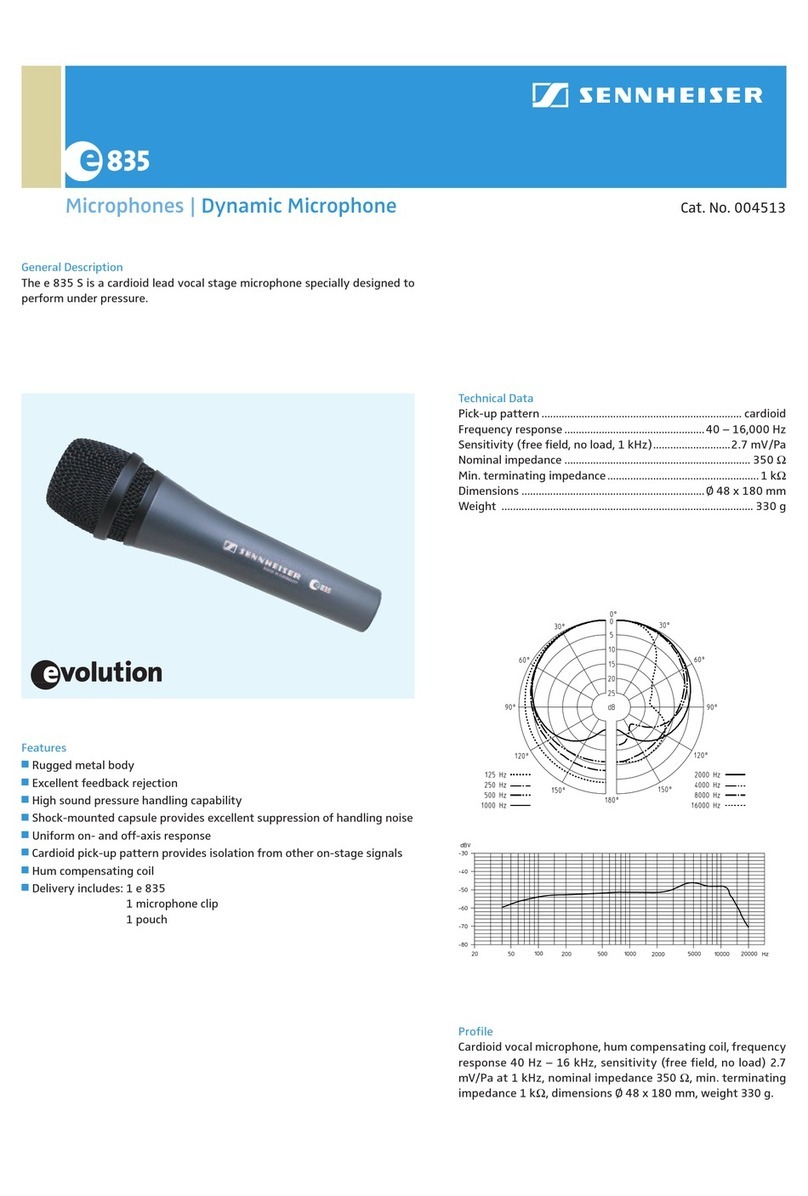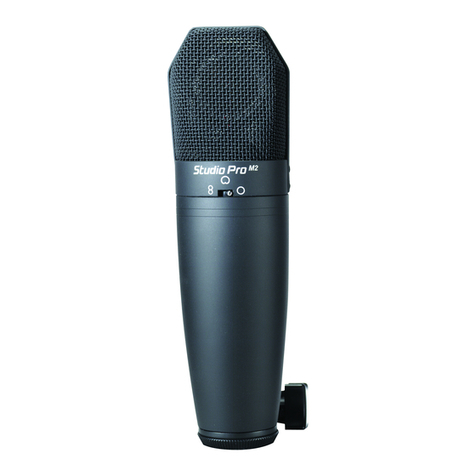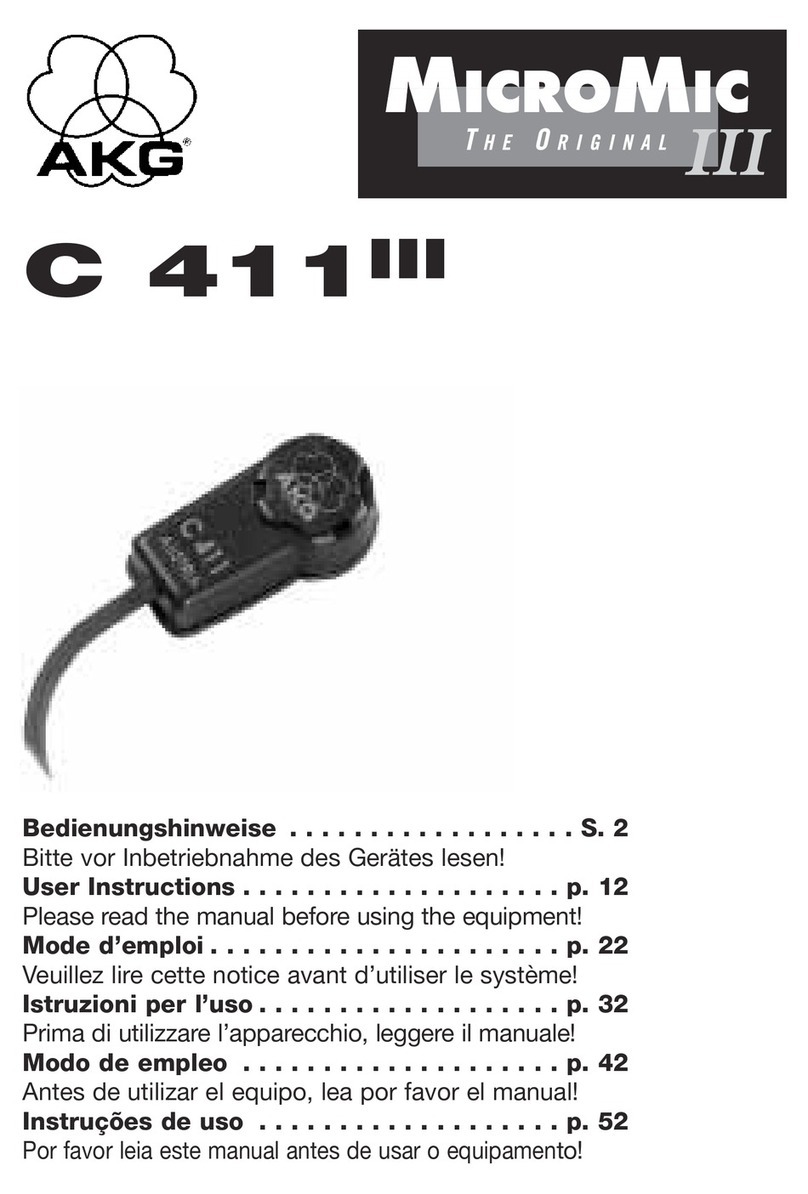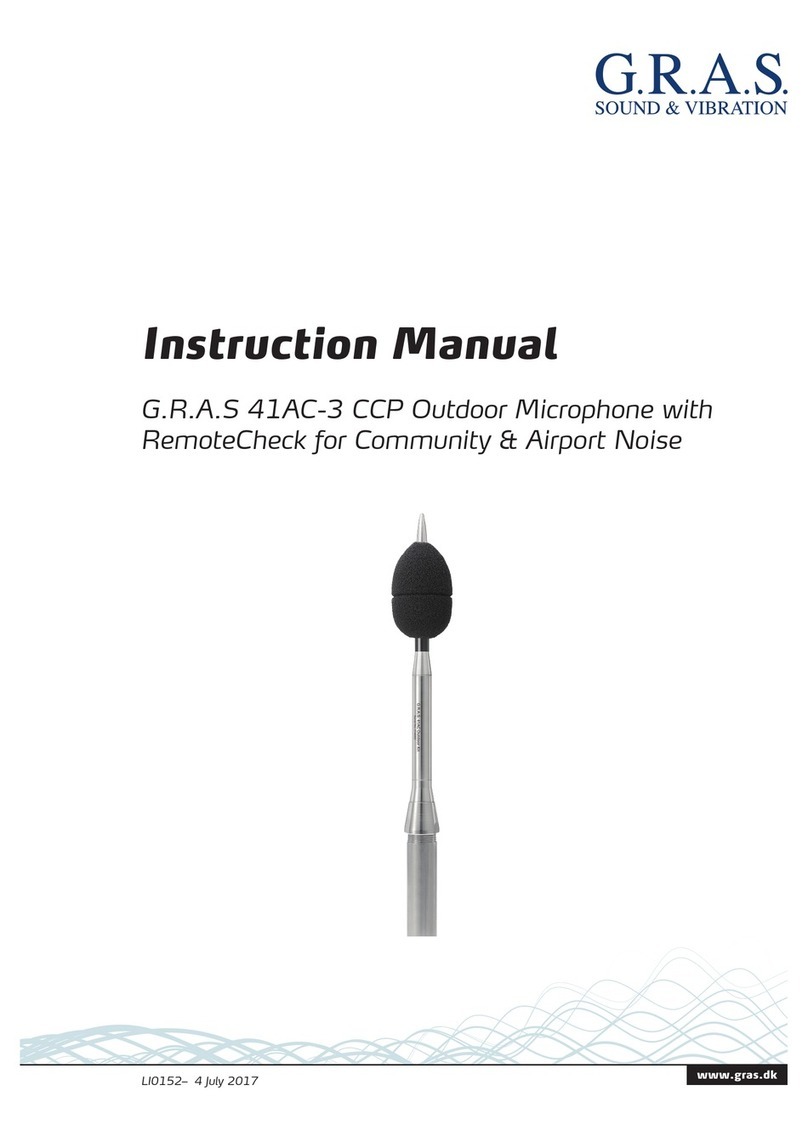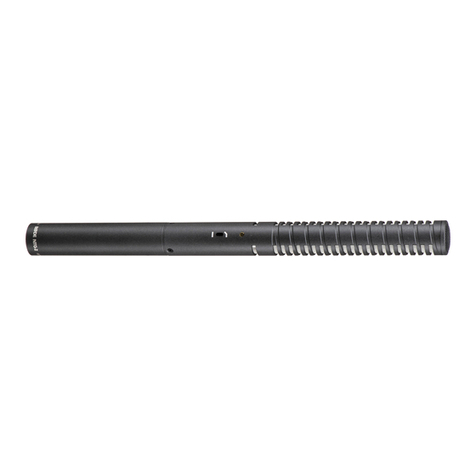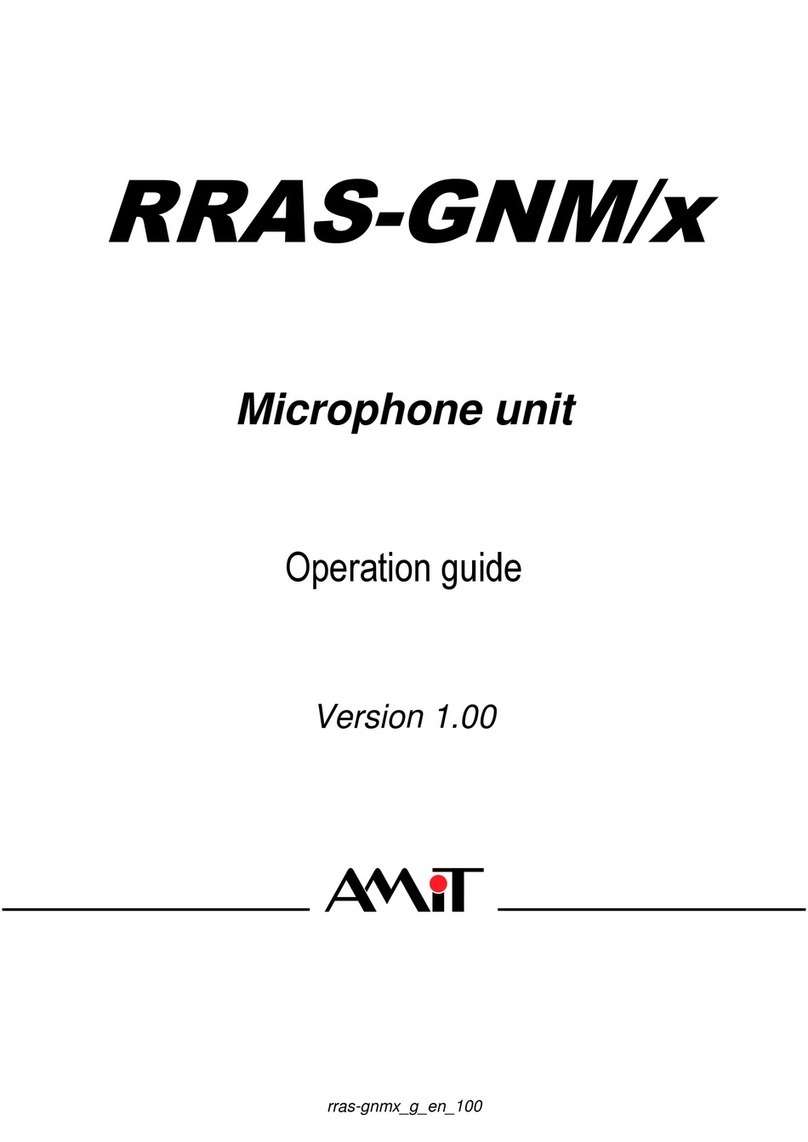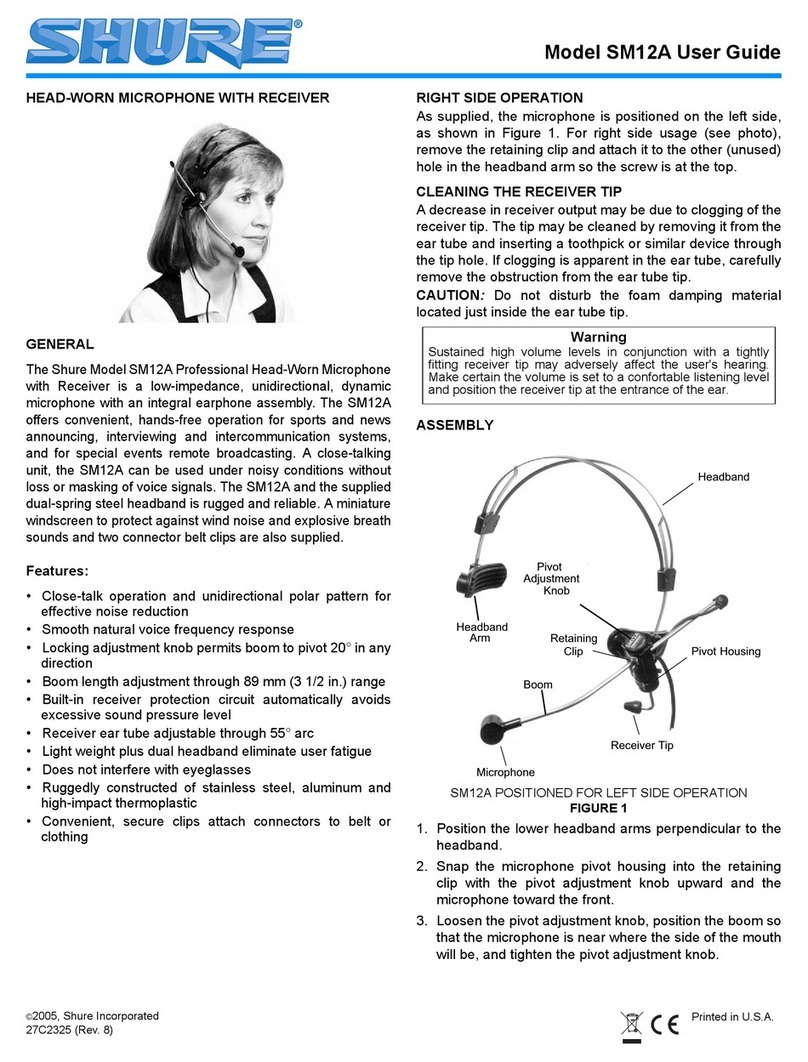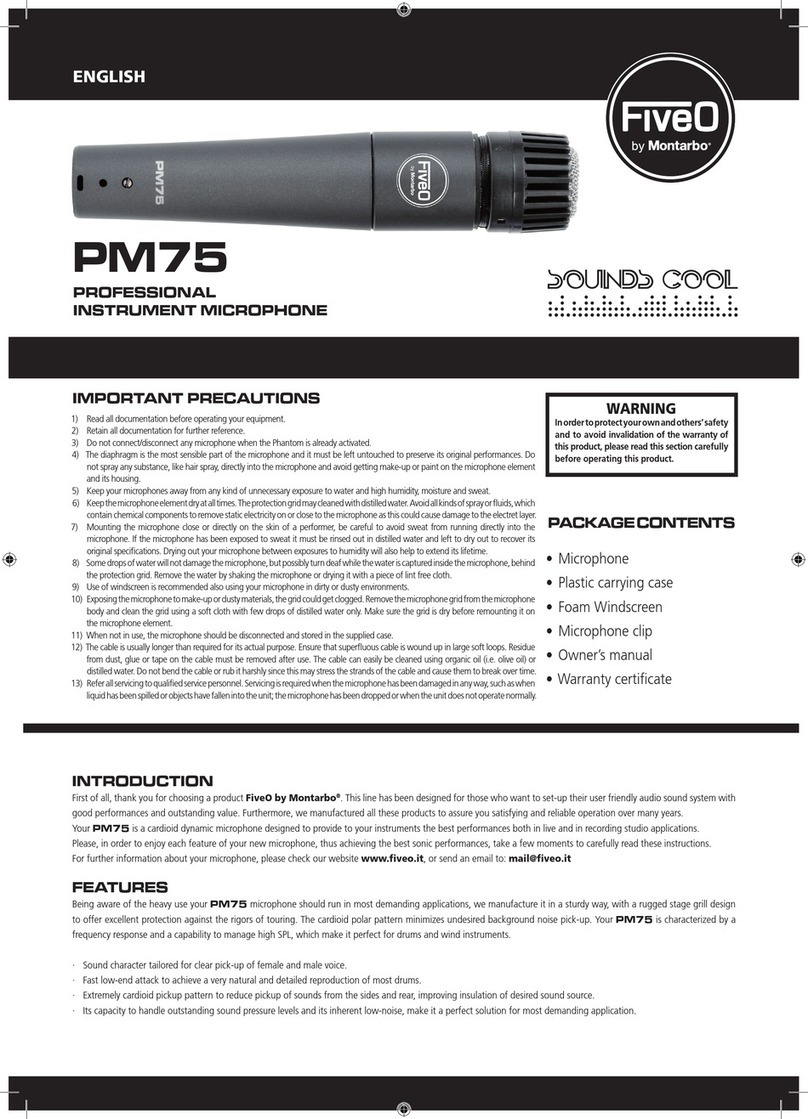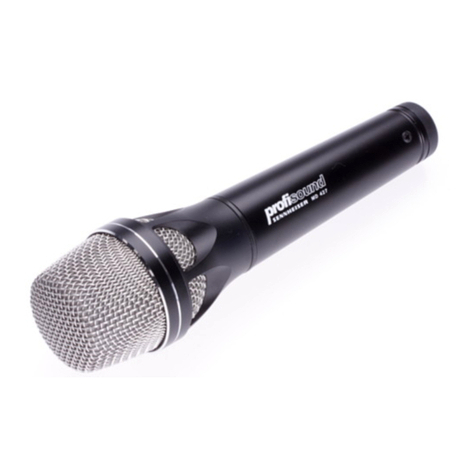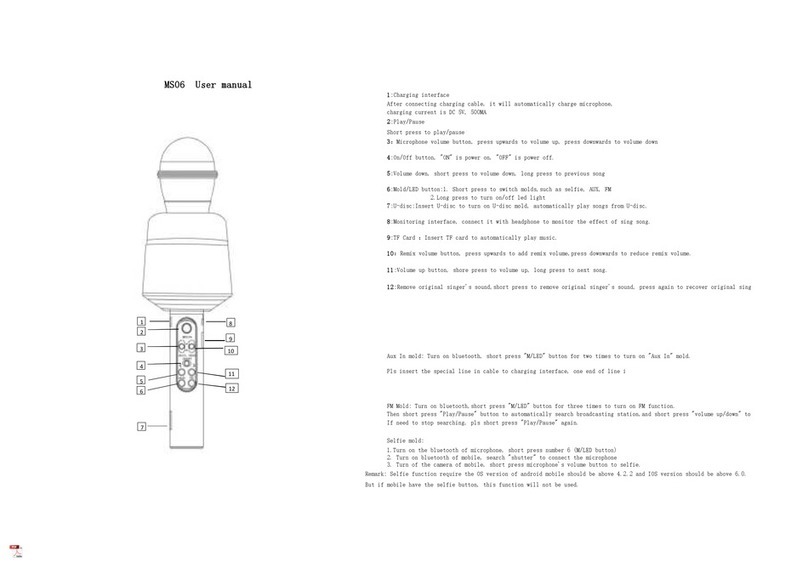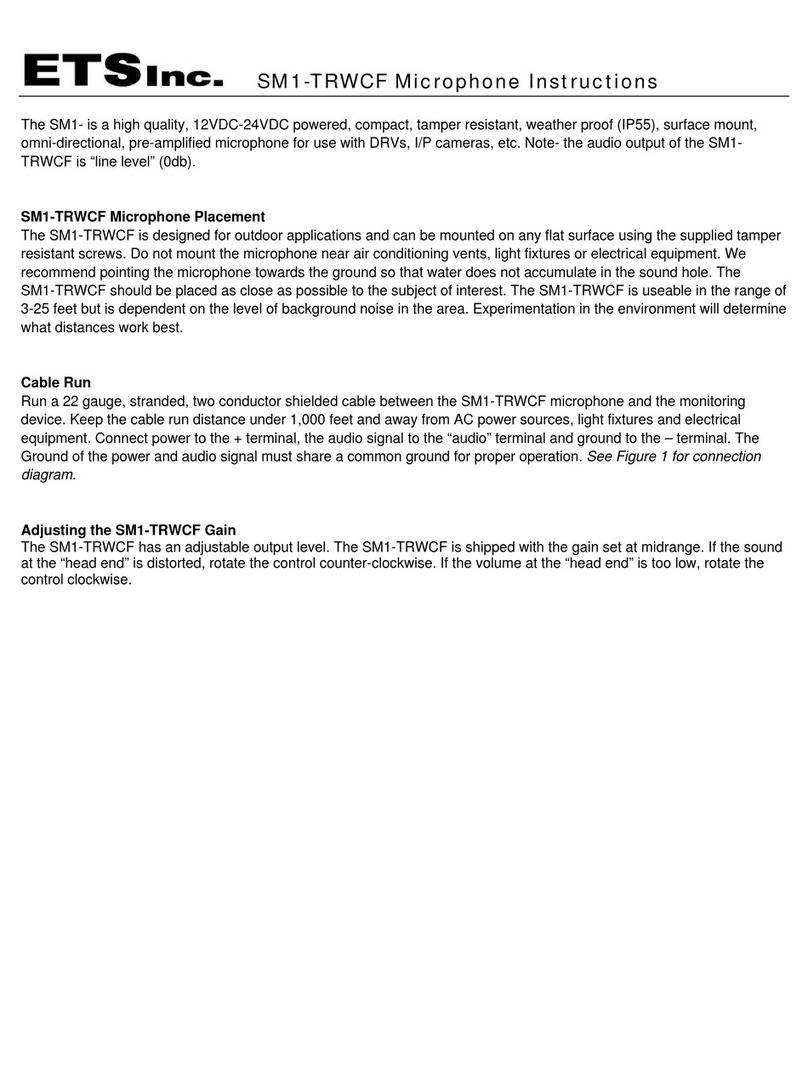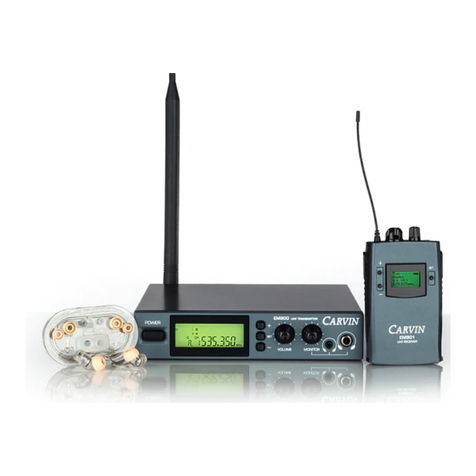Gauge Precision Instruments ECM-47 User manual

Gauge Precision Instruments
Model ECM-47 • User Manual

Model ECM-47 Tube Microphone
Congratulations on purchasing the Gauge ECM-47 Tube Microphone! Your ECM-
47 was hand built in one of the most advanced microphone manufacturing
facilities in the world. It was constructed using the finest quality electronic
components to provide you with years of trouble-free operation.
Your ECM-47 was custom designed by a team of talented engineers. It is then
ear-tested and hand picked, assuring that your microphone is one of the very best,
most musical sounding microphones available today.
Enjoy!
Chandler Bridges & Rob Chiarelli
About Your Microphone
The Gauge ECM-47 microphone is a high quality, variable pattern, studio
microphone utilizing vacuum tube electronics and a gold sputtered, ultra-light
diaphragm in an advanced capsule design.
Each Gauge ECM-47 comes complete with a high quality pop-screen and a
precision-made, flexible shock mount to minimize the effect of floor vibrations
reaching the microphone through the microphone stand.
The Gauge ECM-47 also comes with its own proprietary power supply and cable.
Specifications and other important information on Gauge Microphones can be
found at: www.gauge-usa.com
Proper Connection of Cables & Power Supply
1. Before plugging in or switching on the power supply, always ensure that
the voltage selector switch is set correctly for your area.
a. The United States & Canada is 110v
b. Europe is typically 220v
c. Please check the local supply voltage and use a voltage converter as
necessary.
2. Make certain that the power switch is “off” on the power supply
3. Connect the AC cable to the ECM-47 power supply and then to your

grounded wall outlet.
4. Connect the ECM-47 shock mount to the Microphone
5. Insert the FEMALE end of the 5-pin cable into the ECM-47
6. Insert the MALE end of 5-pin cable into the ECM-47 Power Supply
7. Mute the volume on your preamp, console and/or speakers.
8. Connect the 3-pin audio cable (XLR-MALE) from power supply to the
recording console or microphone pre-amp.
9. Turn on the ECM-47 power supply.
10. Allow 5-minutes for the ECM-47 to warm up. For optimum performance,
allow your ECM-47 microphone to warm up for at least 10-minutes.
Using Your Microphone
When recording vocals at close range, place Gauge Pop Screen between the singer
and the microphone. This will reduce or eliminate the plosives caused by fast
moving air on the microphone diaphragm.
Pickup Patterns
The Gauge ECM-47 pickup pattern control switch is located on the front of the
power supply. The directional pattern of the ECM-47 is fully adjustable through 9
pickup patterns; from Omni-directional to Cardioid to Figure-of -Eight.
NOTE: Whenever the polar pattern is changed, please allow at least 3-minutes for
the change to take full effect.
Cardioid Pickup Pattern
The Cardioid (or Directional pattern) is ideal for recording musical instruments,
vocals and speech. It is the most common pattern as it is best suited for capturing
sounds located directly in from of the microphone.
The Cardioid pattern allows the microphone to be directed at the desired sound
source while offering a measure of rejection to sounds approaching the
microphone from the rear and to the sides.
Where several musicians are playing together, this also pattern reduces the amount
of crosstalk between microphones. The Cardioid pickup pattern will also
minimize room sound or ambience and will provide a more present sound.
NOTE: Cardioid microphones are a type of “pressure-gradient microphone” as

their output signal depends on the differences in air pressure between the front and
rear of the capsule. All pressure gradient microphones exhibit some degree of
proximity effect. This means that there is a rise in their bass response when
positioned very close to the sound source. This can be easily controlled by
adjusting the distance between the microphone its sound source.
Hyper-Cardioid Pickup Pattern
The Hyper-Cardioid pattern is an exaggerated version of the Cardioid pattern. It is
a narrower pickup pattern than the normal Cardioid response and it is very
directional, greatly reducing sound from the sides and rear.
Omni-Directional Pickup Pattern
The Omni-directional pattern means the microphone will capture sound equally
from all directions. The Omni-directional pattern will not exhibit the proximity
bass boost effect inherent in Cardioid or Hyper-Cardioid patterns.
Omni-directional microphones have a very natural sound. This pattern is often
used where there is a need to capture the sound of the room acoustics or where
there are several musicians or singers performing together. Omni-directional
microphones are often used for stereo recording of ensembles or when the sound is
coming from many directions or if the sound source is moving.
Figure-of-8 (Bi-Directional) Pickup Pattern
The Figure-of-Eight pattern means the microphone will capture sound equally
from both the front and rear of the microphone, but not from the sides.
Sound arriving from the sides will result in equal air pressure on both sides of the
diaphragm &consequently there will be no electrical output. Conversely, on-axis
sounds produce the maximum pressure differential &hence the maximum output.
Figure-of-eight microphones are often used in stereo recording applications and
where a high degree of rejection of off-axis sounds would be useful.
Care &Maintenance
The ECM-47 contains fragile parts, including the tube, which may be easily
damaged by excessive shocks, such as dropping it onto a hard surface.

Care should always be taken with all microphones to avoid damp conditions,
humidity, excessive dust and smoke.
Microphones brought into a warm studio from a cold vehicle, for example, may
have condensation on the diaphragm and circuitry. This may compromise the
performance of the microphone until it has completely dried out.
Your Gauge ECM-47 Microphone may be cleaned using a clean cloth. Solvents,
thinners or aerosols should never be used as this may impair operation.
The ECM-47 cables and connectors should be checked regularly for damage. If
the cable connecting a tube microphone to its power supply is damaged, contact
Gauge Precision Instruments or your local service agency for a replacement.
Under no circumstances should a different cable be used as this could damage the
microphone circuitry and/or power supply.
CAUTION: Never run your ECM-47 power supply with the ground disconnected
as this increases the risk of electric shock.
CAUTION: Shock Hazard: Do not open the microphone case or the power supply
case. There are no user serviceable parts inside.
CAUTION: Do not “hot swap” the microphone or power supply. If you need to
remove a cable or change a microphone, be sure to turn off the power supply
before connecting or disconnecting any cables.
NOTE: All Gauge Microphones are manufactured to the highest modern
standards. There are no user serviceable parts inside. Do not attempt to service a
microphone or power supply yourself. This will void the warranty and may cause
serious damage or injury.
Technical
The ECM-47’s audio output is a standard male XLR 3-pin. A positive excitation
of the diaphragm at the front of the microphone will result in a positive voltage at
the output XLR pin 2. The audio output of the ECM-47 is transformer balanced.
In the unlikely event that you experience any problems with your microphone,
please contact Gauge Precision Instruments at support@gauge-usa.com
For more information please visit www.gauge-usa.com
Table of contents
Popular Microphone manuals by other brands
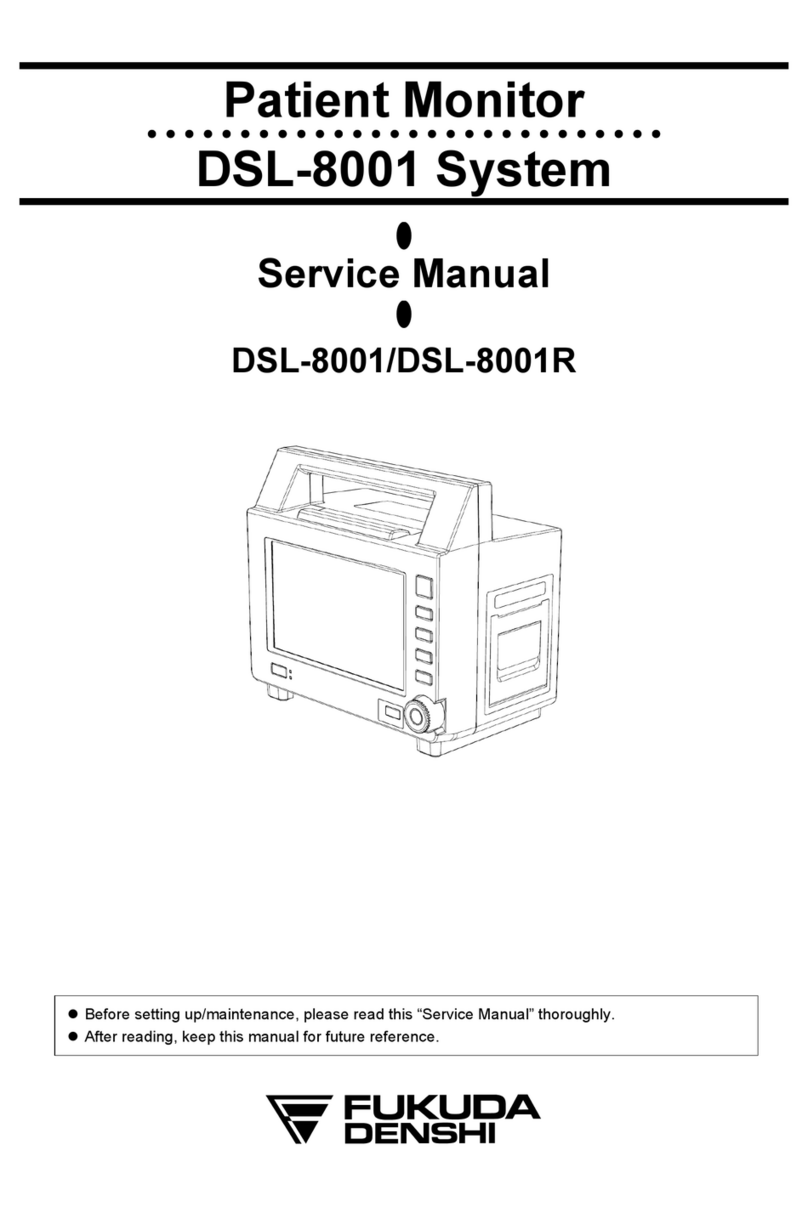
Fukuda Denshi
Fukuda Denshi DSL-8001 Service manual
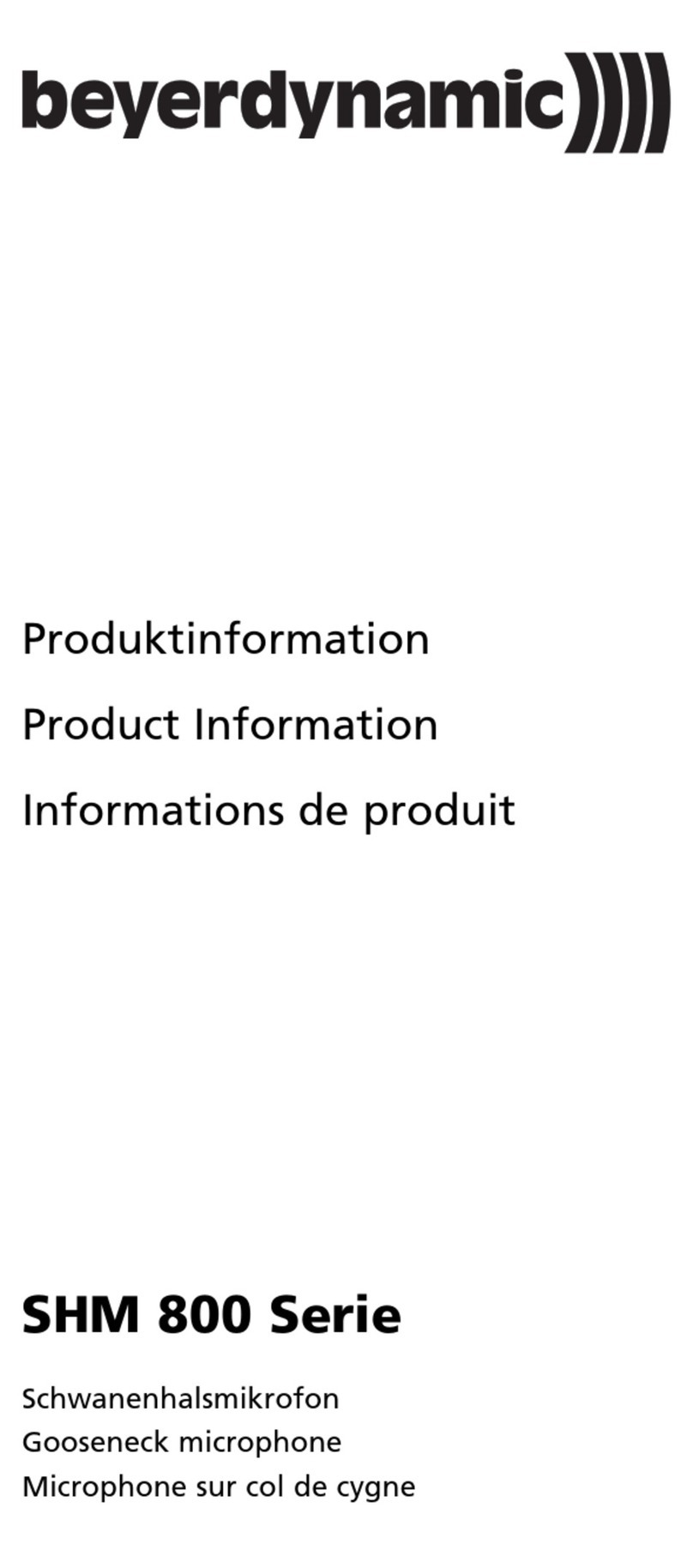
Beyerdynamic
Beyerdynamic SHM 800 Series Product information

Electro-Voice
Electro-Voice RE98 Specification sheet
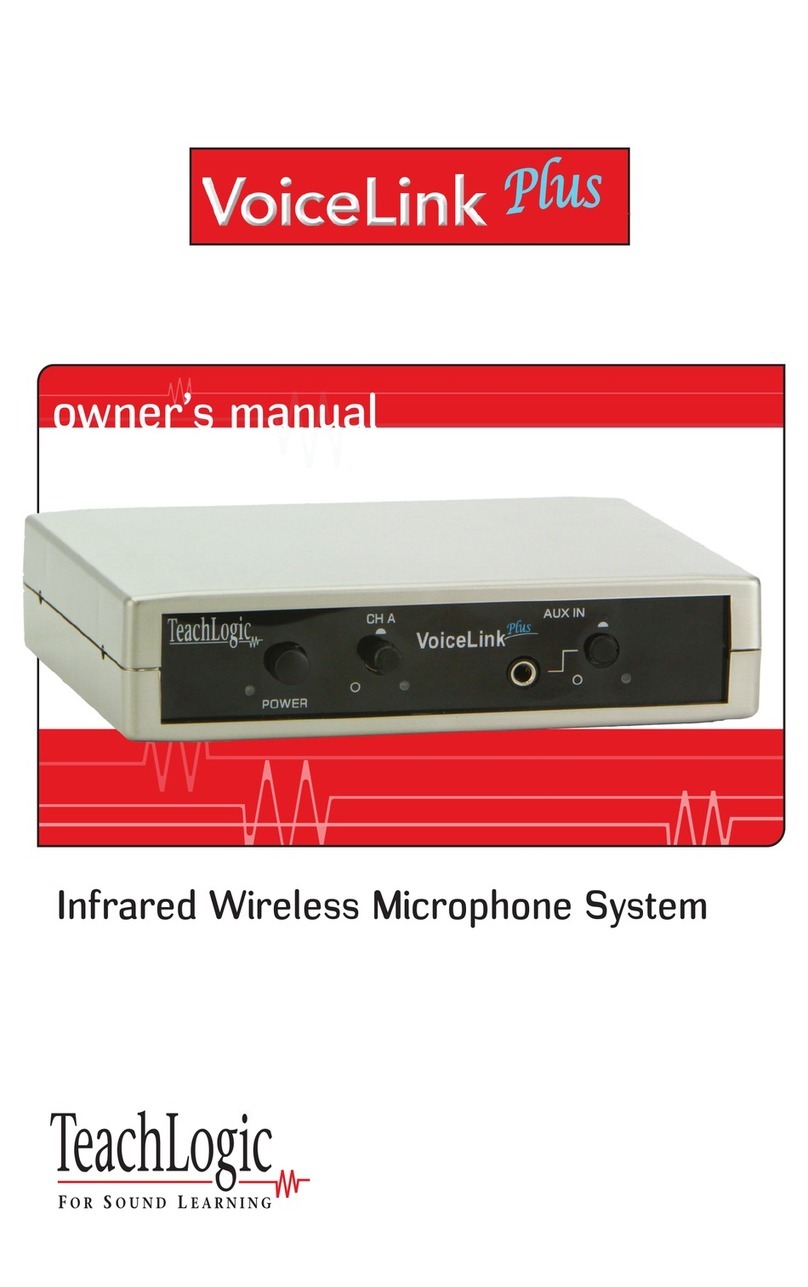
TeachLogic
TeachLogic VoiceLink Plus owner's manual
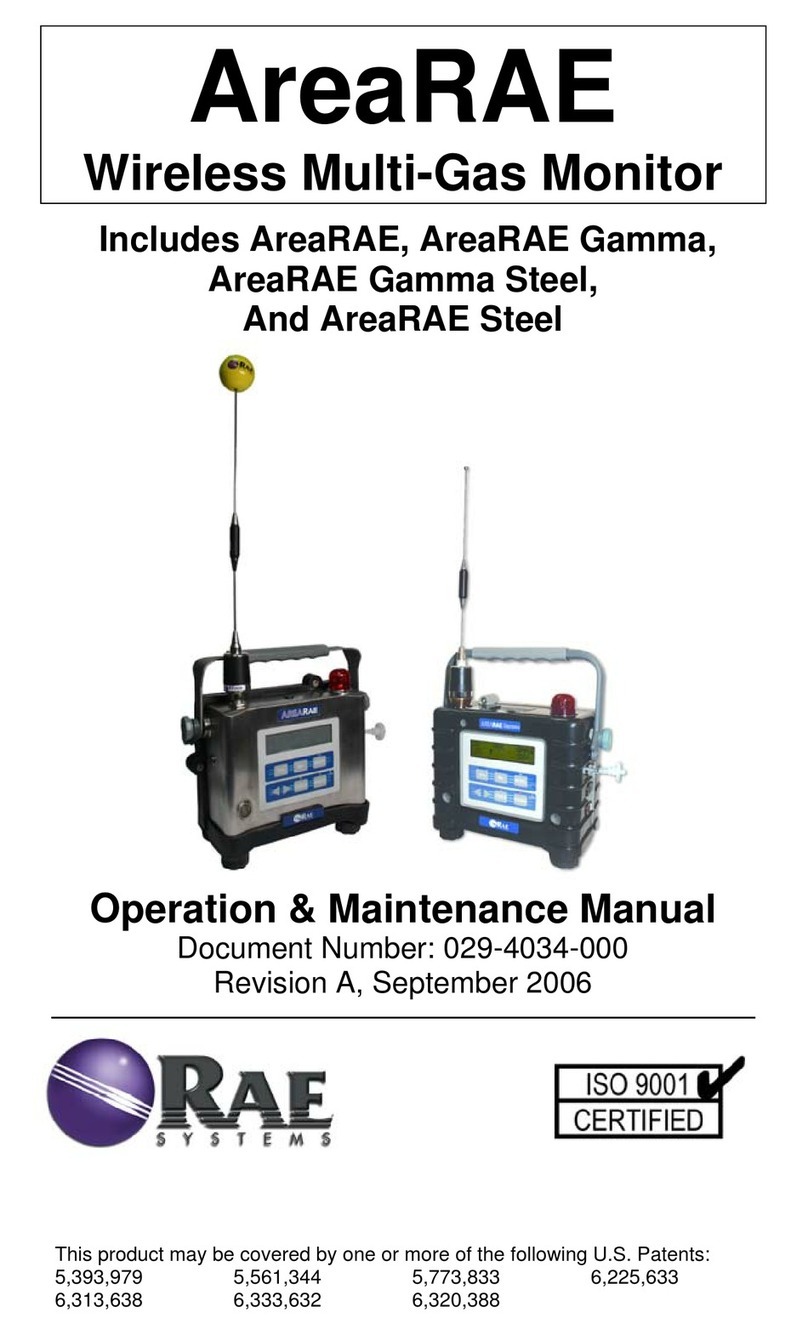
Rae
Rae AreaRAE Operation & maintenance manual
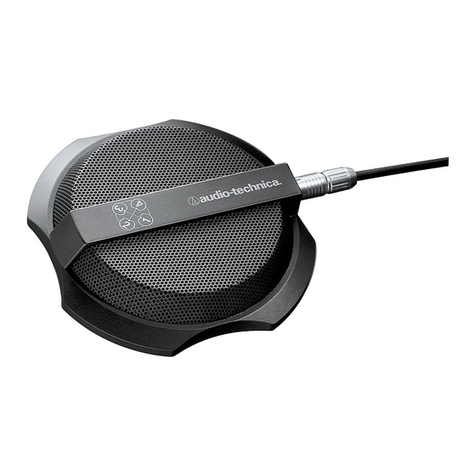
Audio Technica
Audio Technica AT854R Product information
